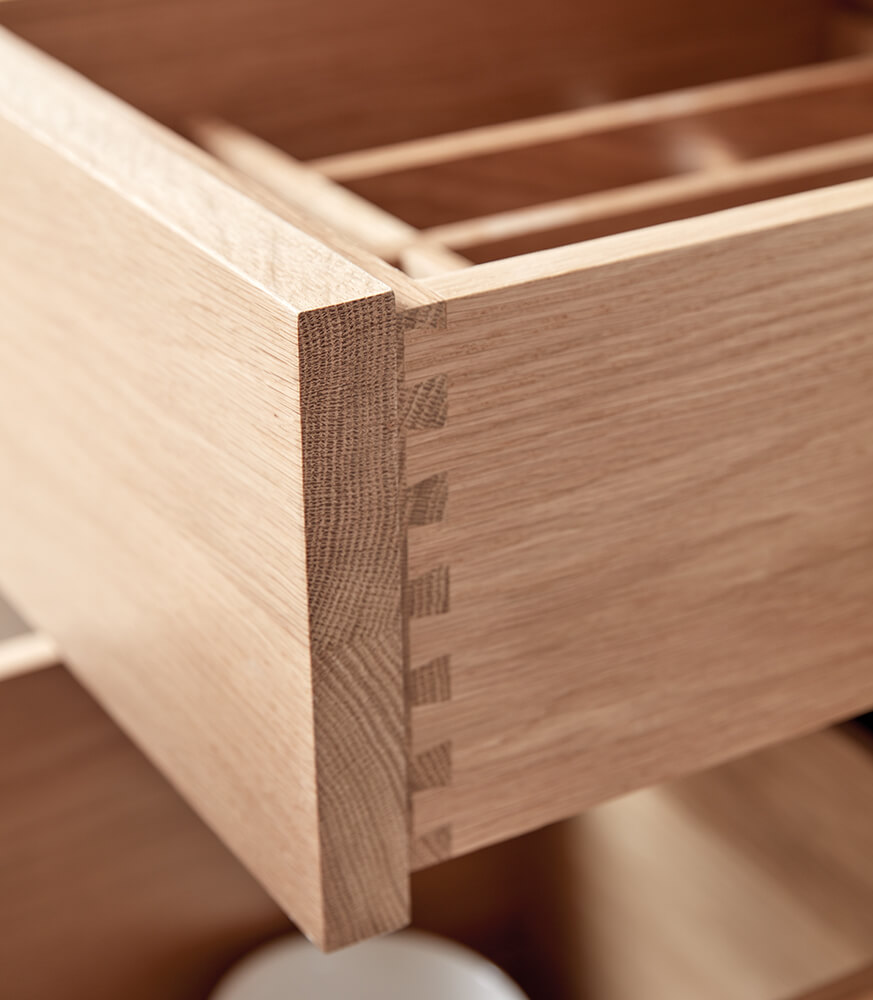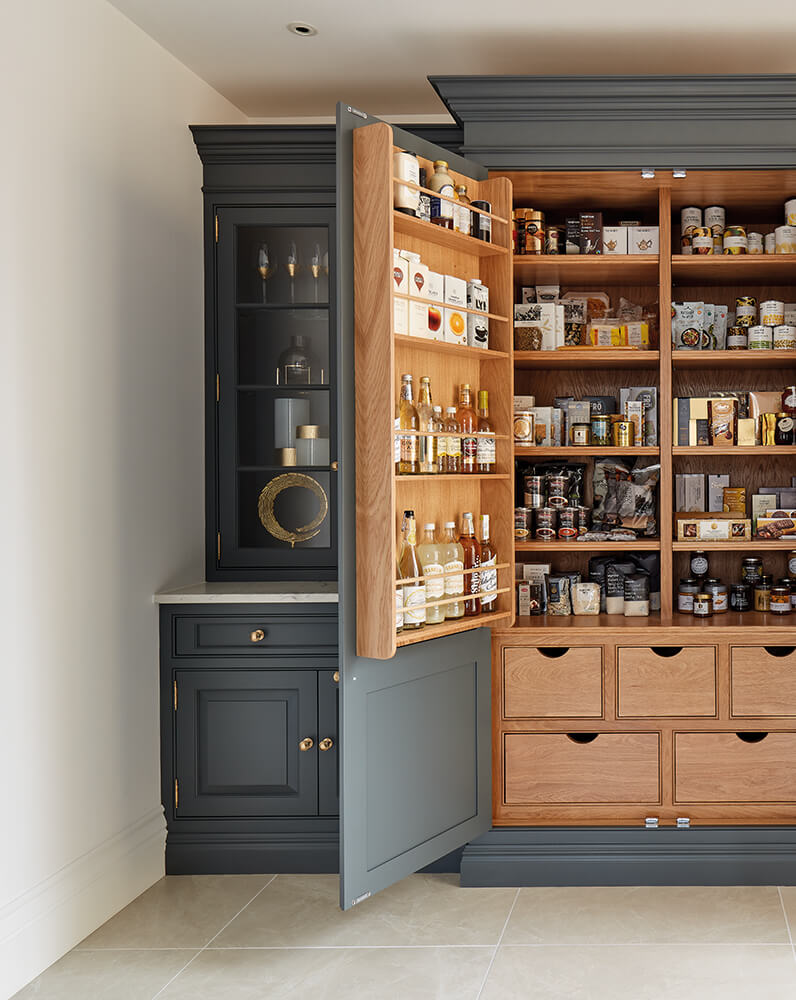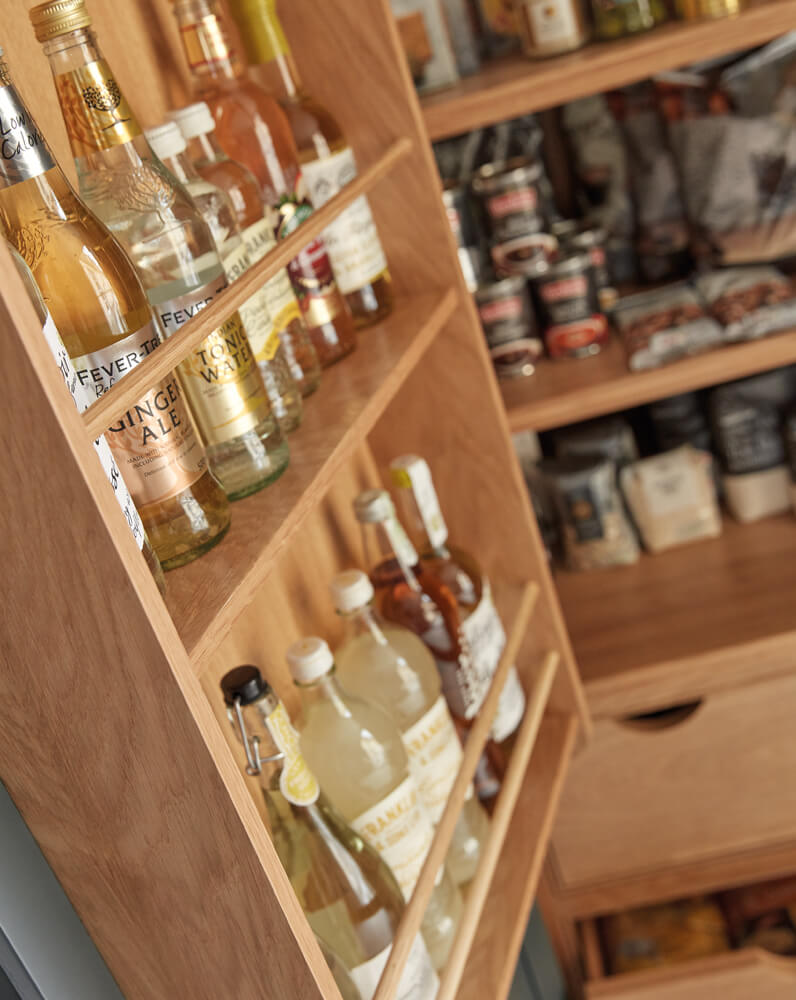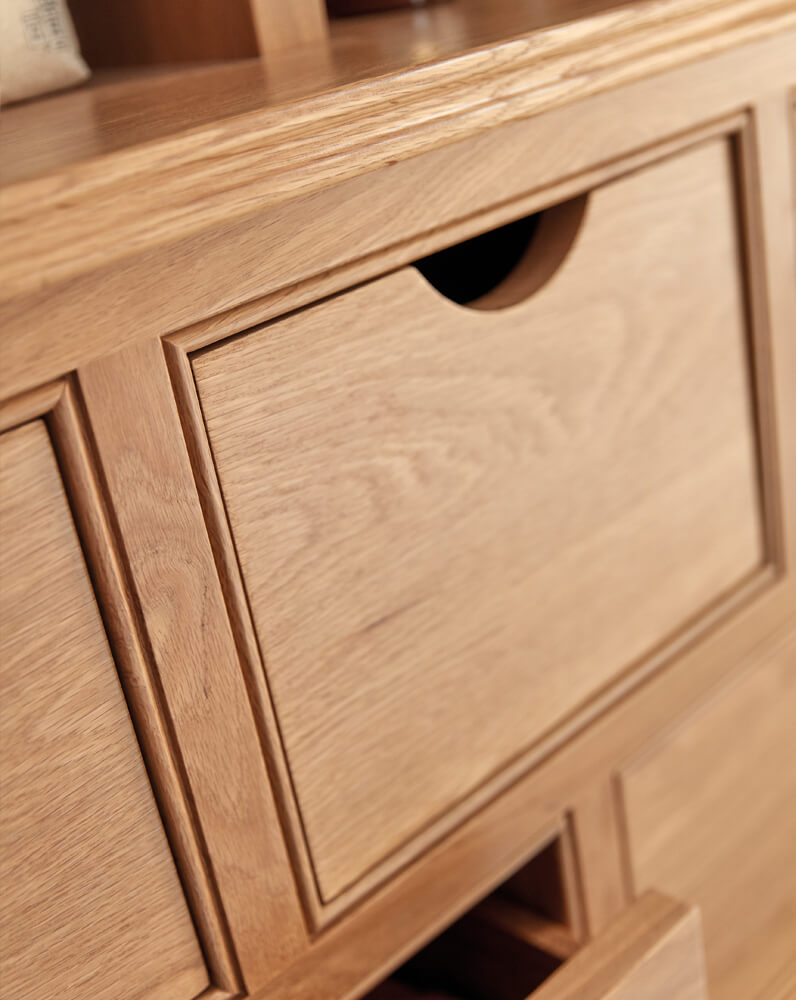Tom Howley Design Icons
We take an honest approach to our kitchen designs, with craftsmanship and quality underlining every aspect of our bespoke kitchen cabinetry. Each one is full of iconic features and individually tailored to create a distinctive Tom Howley design you’d be proud to call your own.
Kitchen Design Evolution
There is a lot to be said for bearing simplicity in mind when designing a kitchen – it should focus on the balance of scale and proportion. Although the Tom Howley design ethos remains the same, kitchens have continued to evolve throughout the years. They are no longer purely utilitarian rooms. Kitchens have grown as we crave larger open plan spaces to suit family living, become more intelligent and flexible to accommodate multiple tasks and are now packed full of personality as the lines between kitchen and living have blurred.
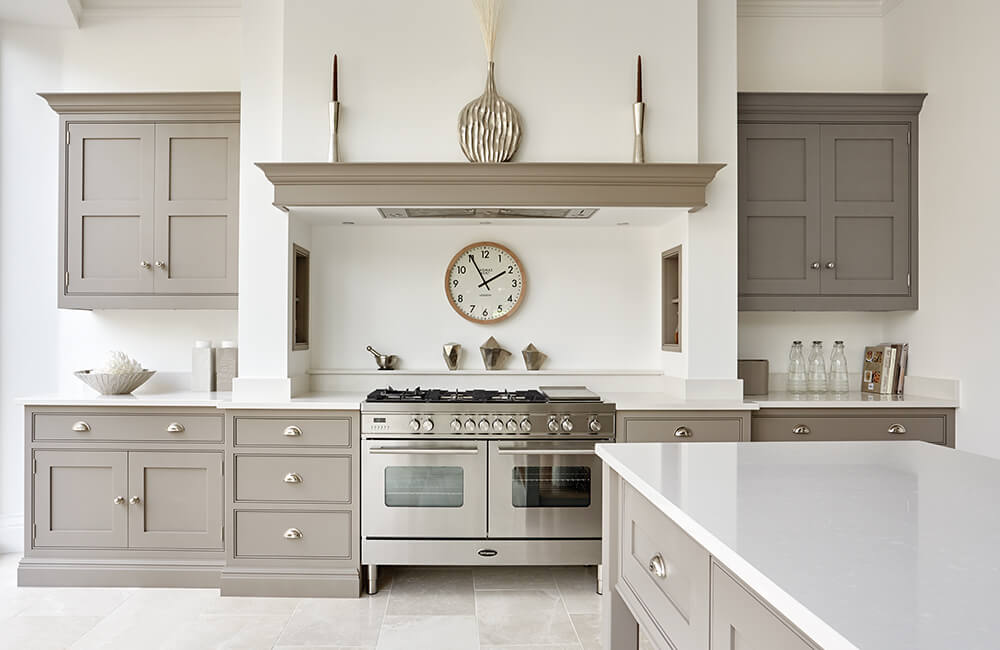
Although some aspects of Tom Howley design will continue to evolve through its colourways, material advancements, and technology innovations, the essence of the shaker style kitchen cabinetry and our iconic design features remain the same.
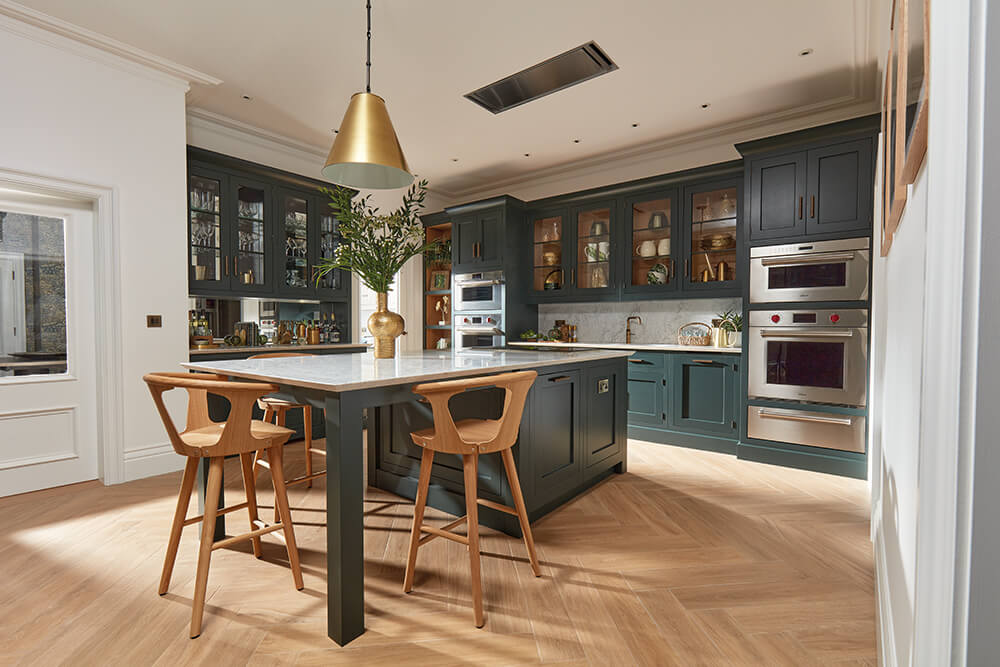
Tom Howley Design Details
We have many classic design features that are distinctively Tom Howley. From our in-frame crafted doors and dovetail drawers to our beautiful double pantry and chimney designs. We’ve shared our top five signature design details below, each idea beautifully considered and crafted to stand the test of time.
Classic Kitchen Cabinetry
There’s no denying classic Shaker style cabinetry has a universal appeal, rooted in tradition with balanced proportions, simplistic design and enduring craftsmanship. Timeless design and beautifully crafted cabinetry are at the heart of Tom Howley. Each kitchen collection has a ‘nod to the past’ whilst fitting in with 21st-century lifestyles and current interior schemes.
Achieving a classic Shaker silhouette, cabinetry is in-frame rather than a lay-on style. We have a beaded frame for a traditional look or simple square frames for a more contemporary aesthetic. Cornices, skirting boards, columns and pillars are the signature pieces in each collection. They bring the kitchen together and are carefully designed to define the style of the kitchen.
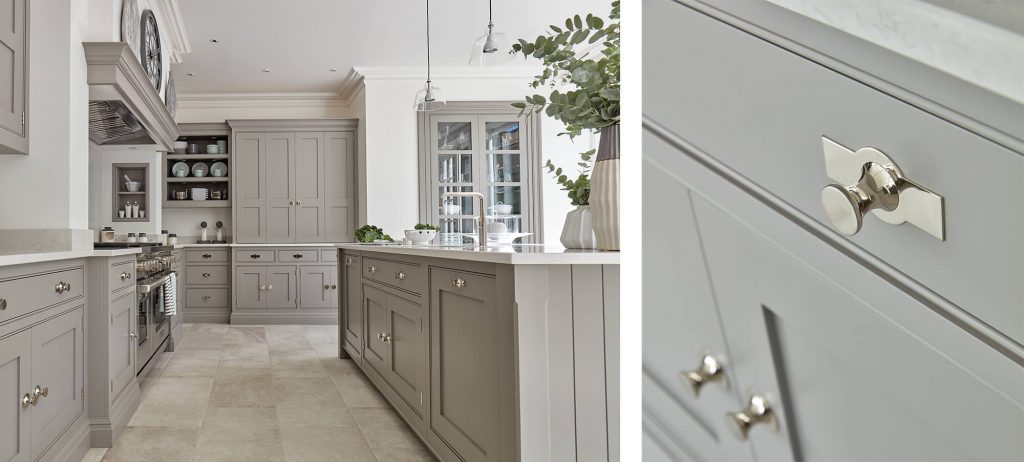
Out of our six kitchen collections, our most iconic style is the Hartford, often found in our popular paint colour, Tansy. In our Alderley Edge showroom alone, 32% of last year’s sales were for Hartford designs. These classic kitchens are beautifully proportioned, with an unerring focus on scale, ensuring the final result is flawless. You’ll also find complementary details such as open shelving, our classic chimney breast, simplistic butcher’s blocks and traditional pantry designs.
Signature Chimney and Mantel Design
Considered chimney and mantel design is a signature detail you’ll often see in a Tom Howley kitchen. In the past, kitchens had simple brackets and shelving mounted over the cooking area. Today we’ve built on this traditional idea to create striking chimney designs with intelligent storage solutions and space for state-of-the-art extraction.
From a design point of view, it’s all about proportion! This chimney breast and mantel shelf demonstrate that stunning architectural features can be created from scratch and still work harmoniously with the scale and style of your kitchen.
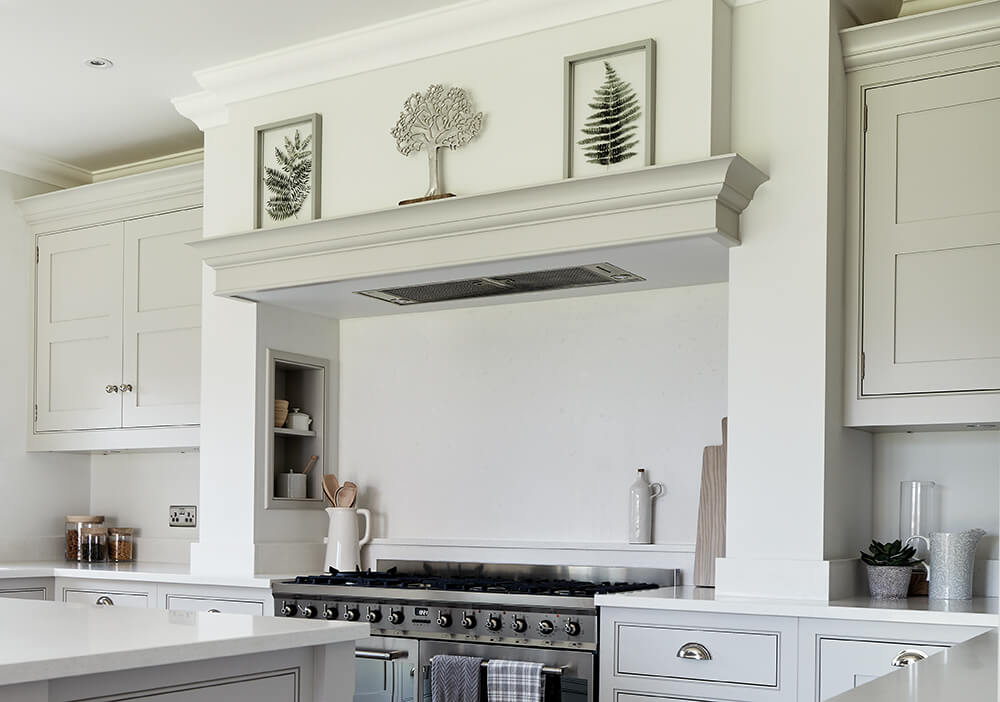
Crafted Dovetail Drawers
We don’t over-embellish our kitchens; instead, we focus on the finer details, quality craftsmanship and classic design. Our solid timber drawers with expertly honed dovetail joints are one of our hidden heroes and something that comes as a given with Tom Howley kitchen design. Not only do dovetail joints offer a beautiful design aesthetic, but the interlocking pins and tails also form a sturdy and long-lasting joint, helping to ensure your kitchen will stand the test of time.
Intelligent Pantry Design
Traditionally placed downstairs in large English Victorian country homes and originally named the ‘butlers pantry’, it was used to store cooking essentials, fine silverware and valuable ingredients. Developing over the years, it eventually became an integral part of many homes. In the early 1900s, modern kitchen pantries started to be used to store dry goods, cans and even vegetables within darkened drawers.
There are no hard and fast rules when it comes to kitchen design other than that your kitchen should work for you and your lifestyle. Today pantries are an iconic part of Tom Howley design, from slim solutions to our awe-inspiring double pantry ideas, all giving you the flexibility of choosing storage options that work for you. Whether that might involve more drawers, an emphasis on shelving, multiple spice racks, or simply somewhere to close the doors on breakfast mess.
Design Director Tom Howley mentioned in a recent Woman & Home feature, “Suitable for small and large kitchens alike, you can integrate them in a way that suits your layout and lifestyle.”
As with all features within a Tom Howley kitchen, our pantries are handcrafted from the finest materials with unique touches elevating the design, such as bespoke engraving, dovetail drawers and special hinges that allow doors to be opened to 180 degrees.
Island Centrepiece
As kitchen styles have evolved to more multifunctional open plan spaces, the kitchen island has become a mainstay element.
When sitting with a designer, this kitchen centrepiece is almost always at the top of clients’ wishlists, and we can see why. Most of our designs encompass some kind of island, designed in the same style as the rest of your kitchen. Social butterflies may opt for a narrow solution with bar seating. Keen chefs often choose a large central design with plenty of prep space, or a bespoke butcher’s table can be the perfect solution if space is at a premium.
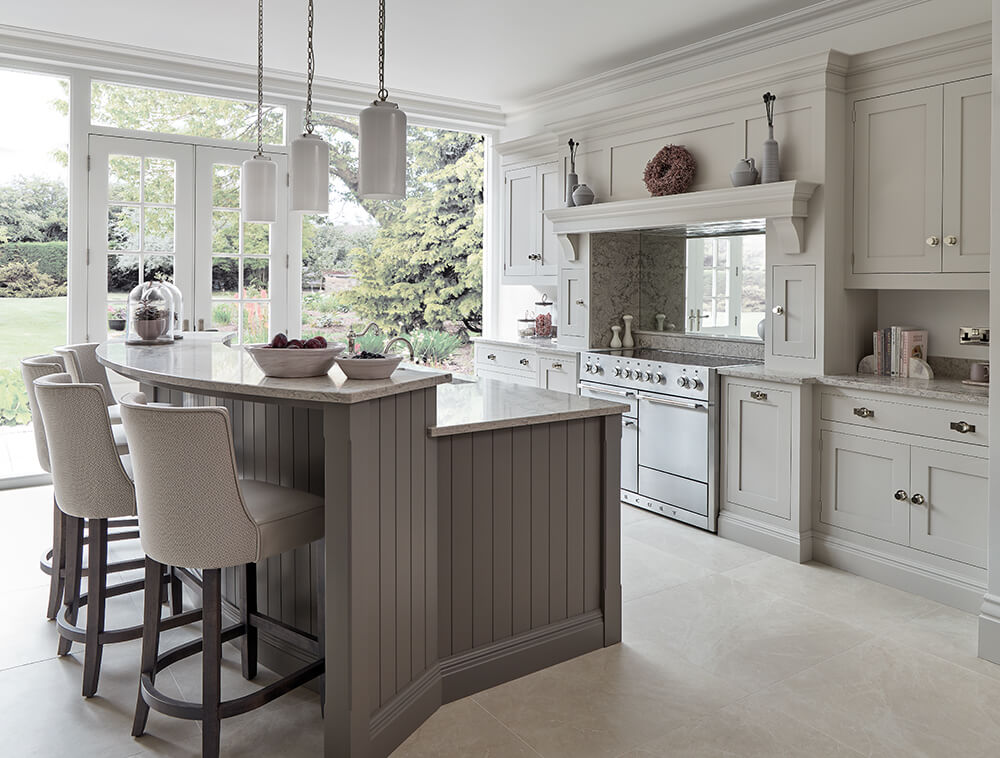
Each one is designed with perfect proportions to give the room a sense of balance and symmetry. Details such as handcrafted doors, corner pilasters and handles create cohesion with the rest of the kitchen. Simple, modern updates such as open shelving, state-of-the-art appliances, a striking colourway and contrasting work surface can give the kitchen a contemporary edge without losing the classic Shaker style look we’re renowned for.
Step inside one of our nationwide showrooms to explore exclusive Tom Howley design details, discover the level of craftsmanship that goes into every one of our kitchens and delve into the minds of our designers, who are bound to ignite ideas. Find your nearest showroom here.
